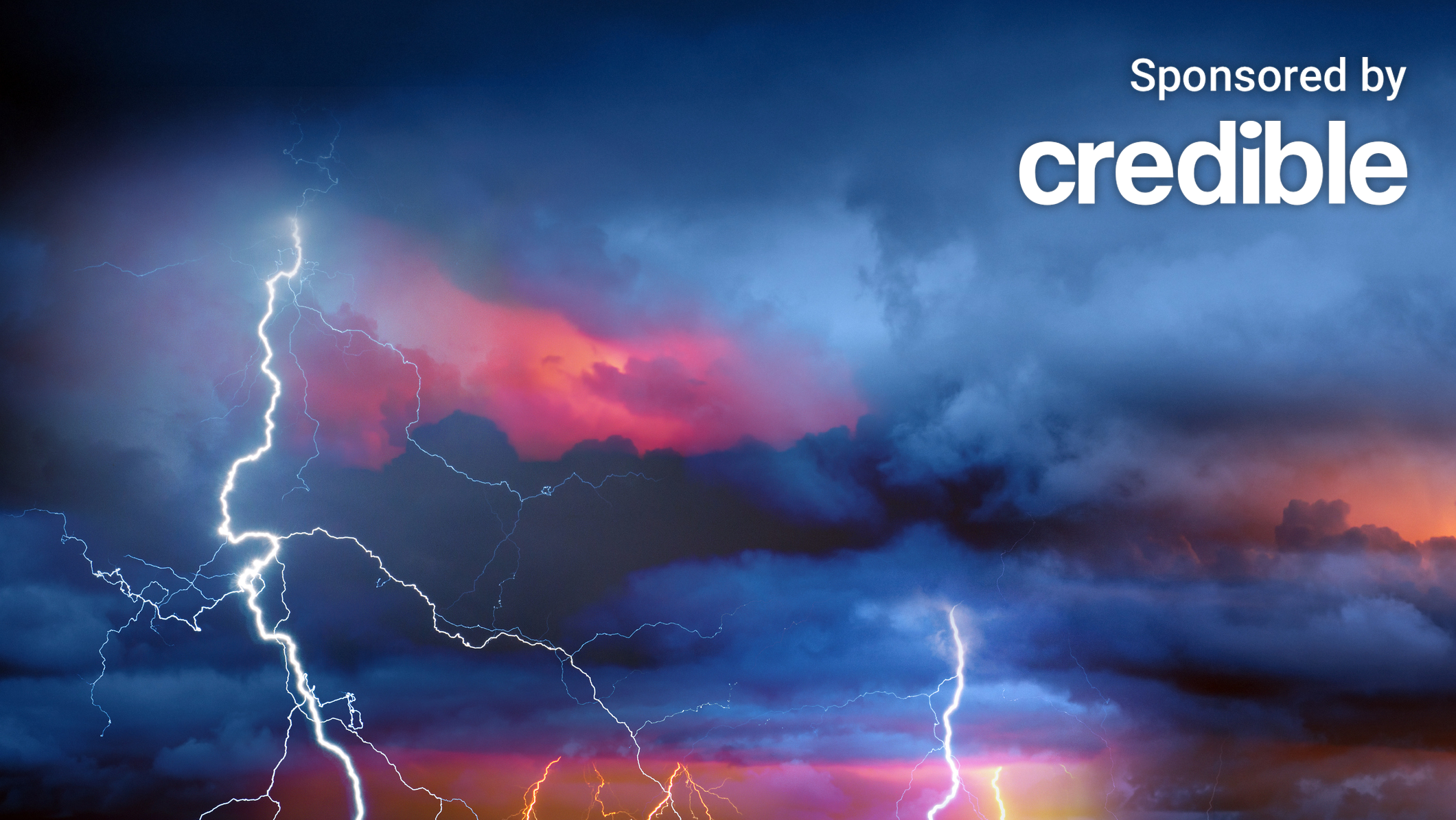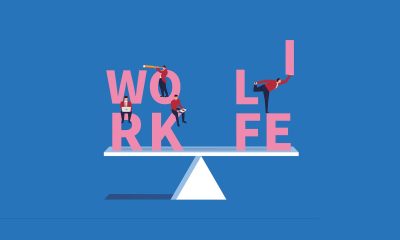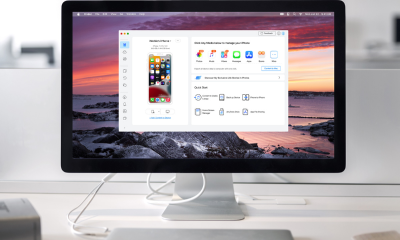Personal Finance
Here’s where homes face the biggest risk for natural disaster

Homeowners insurance can be particularly costly in disaster-prone areas, and some places are at high risk of natural disasters in the next 50 years, according data by CoreLogic.
Here are the areas with the biggest risk of home damage due to natural disasters in 2023, according to CoreLogic’s analysis.
- Plaquemines, Louisiana — (Primary Risks: Hurricane, Inland Flood)
- Jefferson, Louisiana — (Primary Risks: Hurricane, Inland Flood)
- Monroe, Florida — (Primary Risk: Hurricane)
- McMullen, Texas — (Primary Risk: Inland Flood)
- Orleans, Louisiana — (Primary Risk: Hurricane)
- Lincoln, West Virginia — (Primary Risk: Inland Flood)
- Camas, Idaho — (Primary Risk: Wildfire)
- Van Buren, Iowa — (Primary Risk: Inland Flood)
- Crockett, Texas — (Primary Risk: Inland Flood)
- Carter, Missouri — (Primary Risk: Inland Flood)
“Areas on or near the U.S. Gulf Coast are particularly vulnerable to potential catastrophe damages, both currently and in the future,” CoreLogic said in its report.
In addition, CoreLogic took into account projections of climate risk to determine the areas with the biggest risks of natural-disaster-related home damage in the future. Here are the top 10 riskiest places in 2050.
- Plaquemines, Louisiana — (Primary Risk: Hurricane)
- Jefferson, Louisiana — (Primary Risk: Hurricane)
- Monroe, Florida — (Primary Risk: Hurricane)
- Orleans, Louisiana — (Primary Risk: Hurricane)
- Camas, Idaho — (Primary Risk: Wildfire)
- Saint Bernard, Louisiana — (Primary Risk: Hurricane)
- McMullen, Texas — (Primary Risk: Inland Flood)
- Cameron, Louisiana — (Primary Risk: Hurricane)
- Hancock, Mississippi — (Primary Risk: Hurricane)
- Lincoln, West Virginia — (Primary Risk: Inland Flood)
“In examining progressively worsening climate conditions, the riskiest places in 2050 do not change drastically,” CoreLogic said in its report.
CoreLogic’s analysis takes into account the environmental risks to 154 million properties across the U.S. and is built on a data set that includes details of the physical characteristics of those properties including construction year, first-floor height, number of stories and square footage.
If you’re looking to save on your home insurance, it can help to have the right provider. Visit Credible to get options from different home insurance providers, without affecting your credit score.
CONDITIONS IMPROVE FOR BUYING A HOME, REPORT SAYS
Home insurance costs are outpacing inflation
Homeowner’s insurance in some states increased by more than double the rate of inflation between May 2021 and May 2022, according to a study by Policygenius. In fact, rates climbed to as much as 18.5% in Arkansas, 18.1% in Washington, and 17.5% in Colorado. Moreover, home insurance premiums are projected to rise by 9% in 2023, according to an analysis by Insurify.
This translates to an increase from $1,636 to $1,784, according to Insurify data.
Florida, Oklahoma, and Louisiana are the most expensive states for home insurance, Insurify said. In Florida, homeowners pay an average premium of $7,788 a year, according to Insurify data.
“Home insurance rates are increasing for several reasons, including inflation, climate change, higher material costs, supply chain issues, and increased claims for fire and water damage,” Insurify said in its report. “Different factors, like your credit score, ZIP code, and the coverage level you need, also affect how much you’ll pay for home insurance coverage.”
Moreover, experts are split as to when inflation would slow down enough to bring down insurance premiums.
“The same inflationary pressures that are driving up your grocery bill are now driving up your homeowner insurance rates,” Colleen Finn, the managing director of home product management at Boston-based insurance company Plymouth Rock, said in a statement. “It is costing more and taking longer to repair your home, increasing the average cost per claim and ultimately the cost of homeowners insurance for everyone.”
If you’re trying to save on home insurance, it can help to shop around for the best rates. Visit Credible to get your personalized quote in minutes.
HOME PRICES COULD DROP THROUGH 2023: ZILLOW
Nearly half of homes aren’t prepared for hurricane season 2023
Hurricanes can be devastating, but some homes may not be properly insured to cover damages these storms may cause, according to a National Association of Mutual Insurance Companies (NAMIC) survey.
In fact, 65% of American homeowners viewed hurricanes as a moderate to extreme risk, but only a bit more than half said they have specialized coverage against flooding. This is the costliest damage triggered by hurricanes.
Moreover, experts have predicted 13 named storms for this year, including six hurricanes. Two are expected to reach Category 3 or higher.
“Hurricane season is almost here, which means the homes and livelihoods of the people mutual insurers serve will once again be at risk,” Neil Alldredge, the president and CEO of NAMIC, said in a statement. “Standard homeowners and renters’ policies don’t cover flooding, so it’s imperative that homeowners assess their risk and understand how to protect their most valuable assets by obtaining flood insurance coverage.”
But upgrading a home with additions such as wind-rated garage doors or hurricane shutters can minimize the hazards of hurricanes while saving homeowners money on their home insurance premiums.
“Many insurers offer discounts for mitigation measures that help reduce the likelihood of a loss or the extent of damage,” Collins said. “Discounts vary by company, so talk to your insurer or agent to see what is available to you.”
If you want to lower your home insurance premiums, it may help to switch to a better provider. Visit Credible to speak to a home insurance expert and get your questions answered.
MANY AMERICANS STILL OPTIMISTIC ABOUT HOMEBUYING DESPITE TOUGH ECONOMIC BACKDROP: TD BANK
Read the full article here

-

 Side Hustles5 days ago
Side Hustles5 days agoHow to Create a Unique Value Proposition (With Tips & Examples)
-

 Side Hustles5 days ago
Side Hustles5 days agoThe DOJ Reportedly Wants Google to Sell Its Chrome Browser
-

 Investing4 days ago
Investing4 days agoAre You Missing These Hidden Warning Signs When Hiring?
-

 Make Money5 days ago
Make Money5 days ago7 Common Things You Should Never Buy New
-

 Investing6 days ago
Investing6 days agoThis Founder Turned a Hangover Cure into Millions
-

 Investing1 day ago
Investing1 day agoThis All-Access Pass to Learning Is Now $20 for Black Friday
-

 Passive Income1 day ago
Passive Income1 day agoHow to Create a Routine That Balances Rest and Business Success
-

 Investing4 days ago
Investing4 days agoGoogle faces call from DuckDuckGo for new EU probes into tech rule compliance By Reuters


















